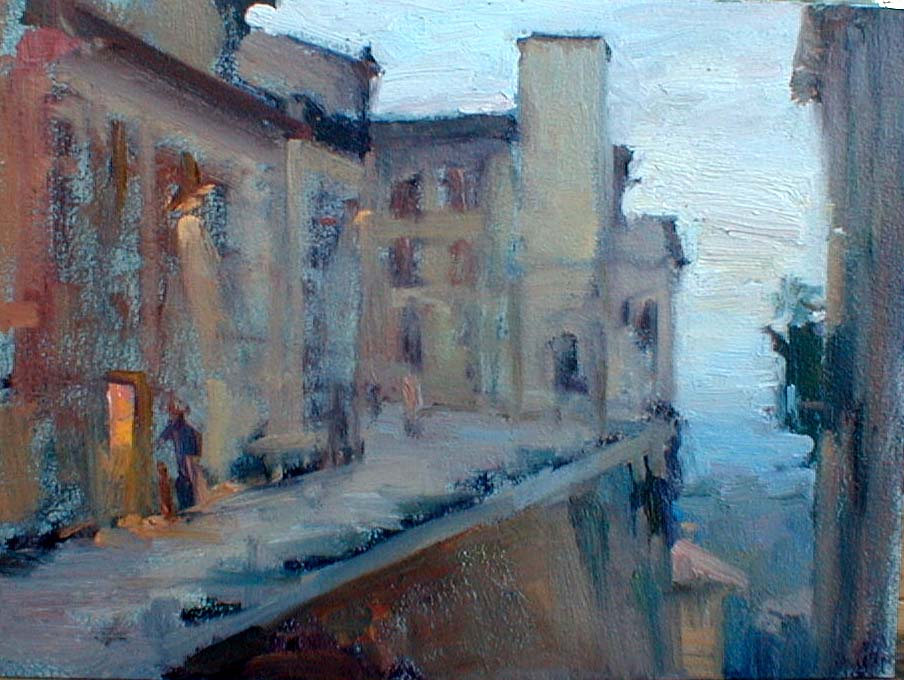
If you want to keep your viewer fascinated by your painting, use simulation of detail. If you use this technique in sections of your painting, your viewer cannot precisely identify it at first glance and therefore looks at it longer and more closely.
This makes your painting much more interesting compared with a painting in which you describe everything in accurate detail. The viewer will then fill in the details themselves, stimulating their imagination. Your brushwork will be more interesting too.
Some ways you can create simulation of detail in your paintings
- Change the value within shapes.
- Create multiple changes of temperature, with warm/cool variations within your shapes.
- Simplify your shapes more.
In the painting “Pacific Grove Sunset” you can see a variety of warm and cool colors as well as slight changes in value to create the effect of surf on the rocks.
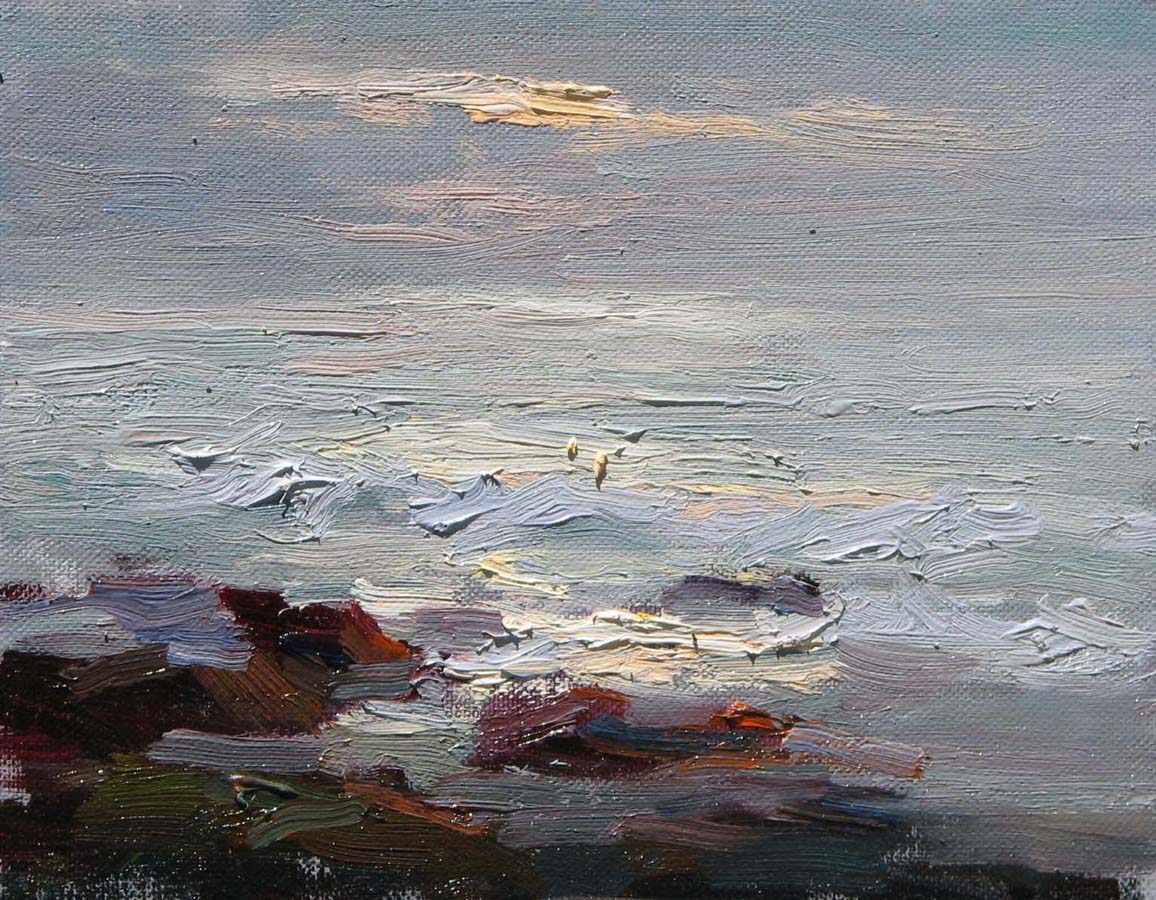
How the Old Masters Used Simulation of Detail
Many old masters use simulation of detail to keep the viewer’s eye moving around the painting, and also to make the focal point or area more obvious because it is painted in more detail.
“The most detailed parts in this painting by Sorolla are the curves of the rocking chair. From there our imagination can start to fill in the rest. The figure of a woman reading a book is still recognisable even though there is little detail. The surrounding areas are becoming less and less detailed, yet we still get the impression of a restful scene in a beautiful garden. Color spots with defined edges give the painting a feeling of dimension, and those color spots tie together with the figure of the woman and bring the image to the front. Everything else recedes into the background.” Mondre, VAA Student
“In this painting, ten Cate uses simulation in various places throughout the painting. The main figures are barely rendered but enough to let us know what they are. They are wearing bright colours of red/violet, blue, and red. The black squiggles in front of the figures represent reflections, which tells us that the pavement is wet! In the background, we can make out the roofline of a building. We see vertical lines that may represent boat masts and smudges of what may be fog. He was able to simulate objects by using his pastel stick as a drawing tool rather than a painting tool.” Rhonda Whittington, VAA Student
“Sargent effortlessly renders this group of people with only minimally suggested detail, yet our own eyes fill in the bulk of what our brains recognise. The little blonde boy on the right is a good example. He is literally just a few contrasting brushstrokes, yet we recognise his complete form in light and shadow, and understand that he is bending forward and not a weirdly deformed blob.” Karina Gronnvoll, VAA Student
Contemporary Artists
As well as the Old Masters, there are many contemporary artists who are using simulation of detail to enhance their paintings.
“Mensing has a very strong ability to use strokes of strong colour shapes with variation of hue, value and saturation to turn the form and to imply shapes. The horse is really just a bunch of abstract colour shapes. Warm lighter oranges on the sunny side, cooler reds on the shadow side and a red slash as the transition colour. The background has varying dabs of paint with the smallest dabs where the feet are hitting the ground, implying dust– but not rendered in the slightest detail. The cooler pale violet patches sit next to the warm pale peach patches in the ground just behind the horse, keeping the value the same but creating an interesting patchwork that implies textured dirt and dust.” Kim Stepney, VAA Student
See if you can determine where, why, and how this artist has used simulation of detail.
To learn more about simulation of detail
For much more on this topic, see the lessons on Brushwork in our Virtual Art Academy® Apprentice Program.
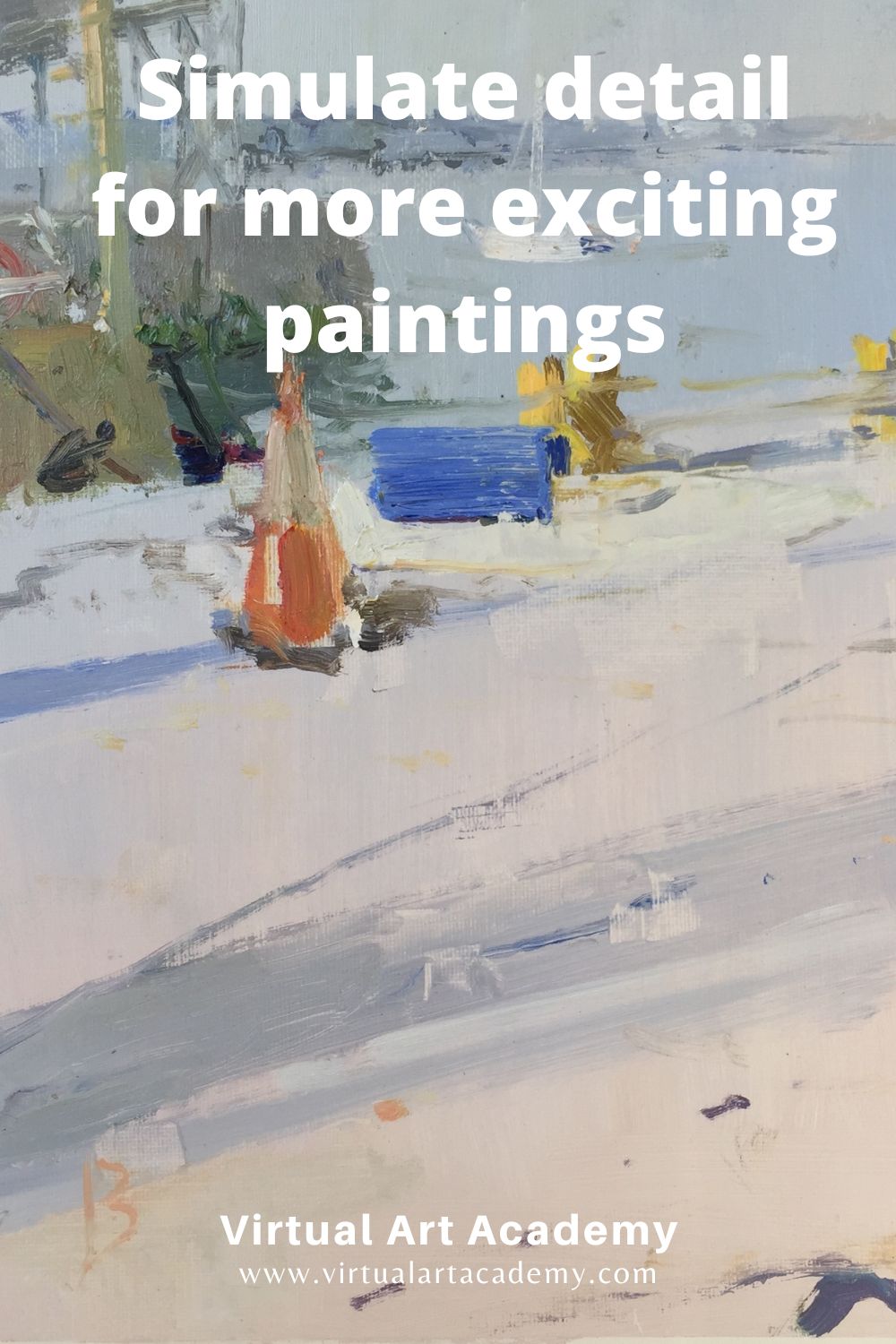
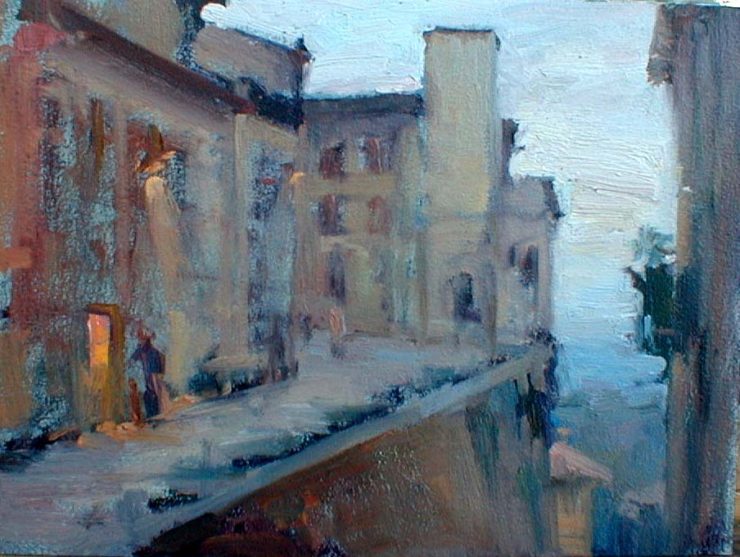
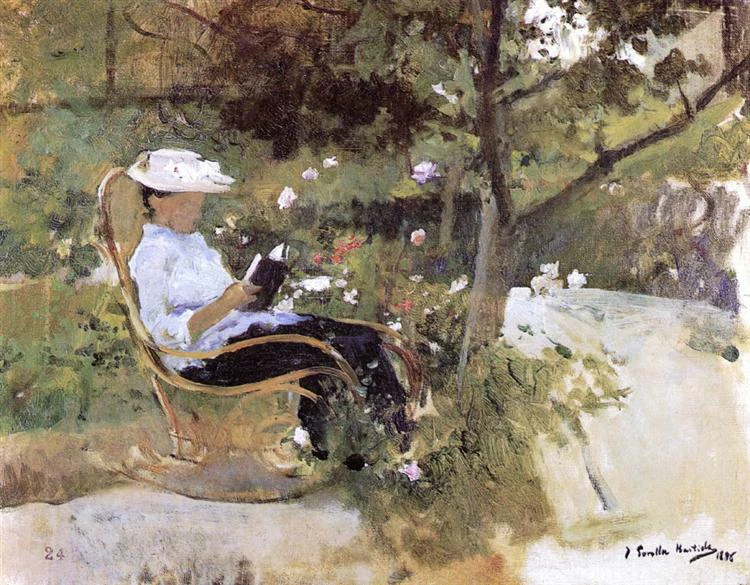
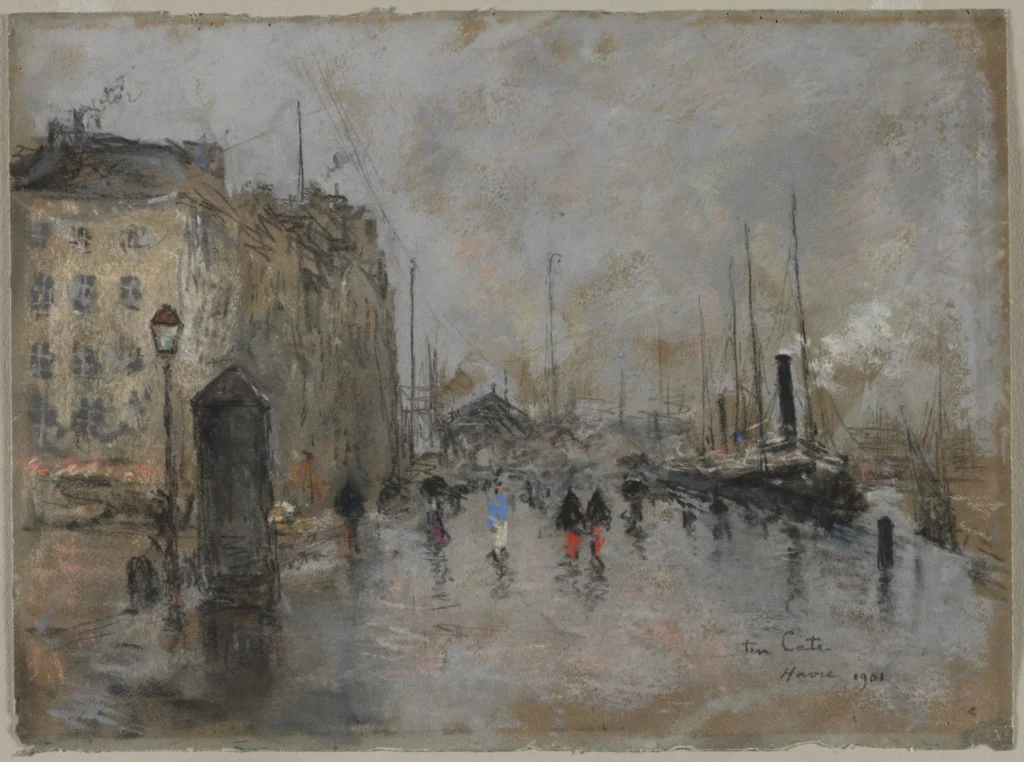
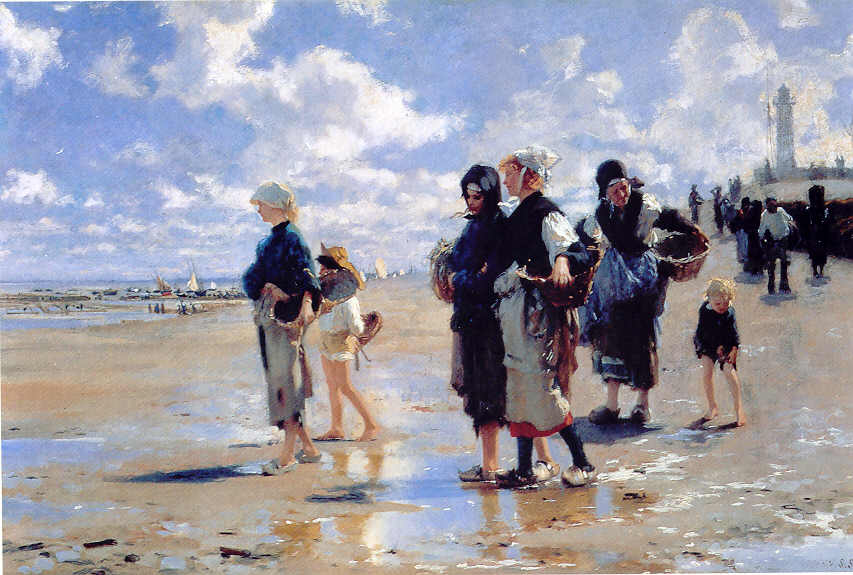
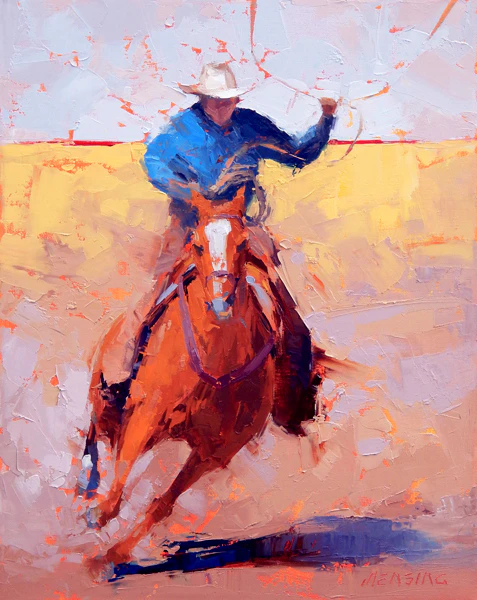
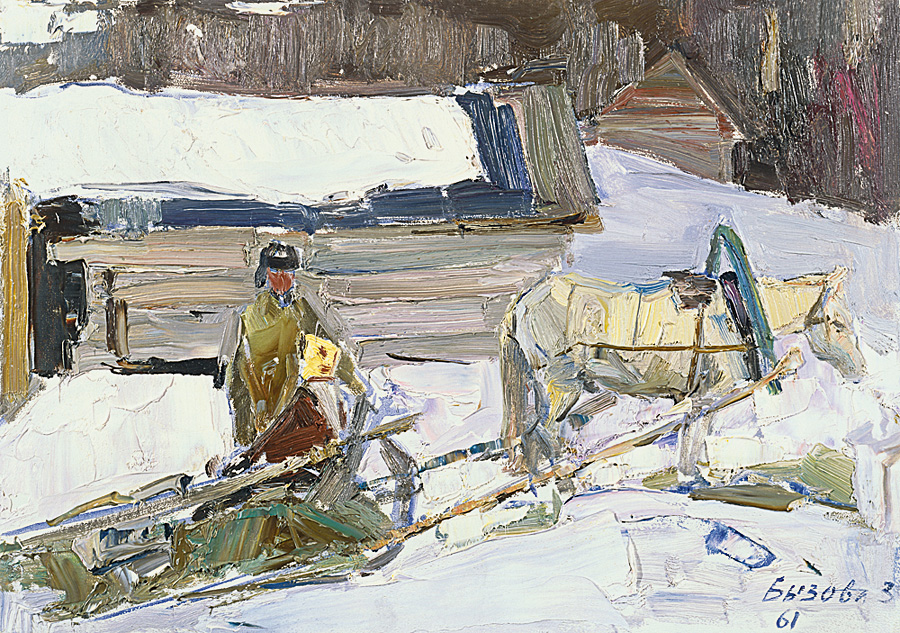
Good thoughts, thank you Barry John. I’ve recognized my need to be less of a journalist and more of an impressionist regarding detail, and this helps me!